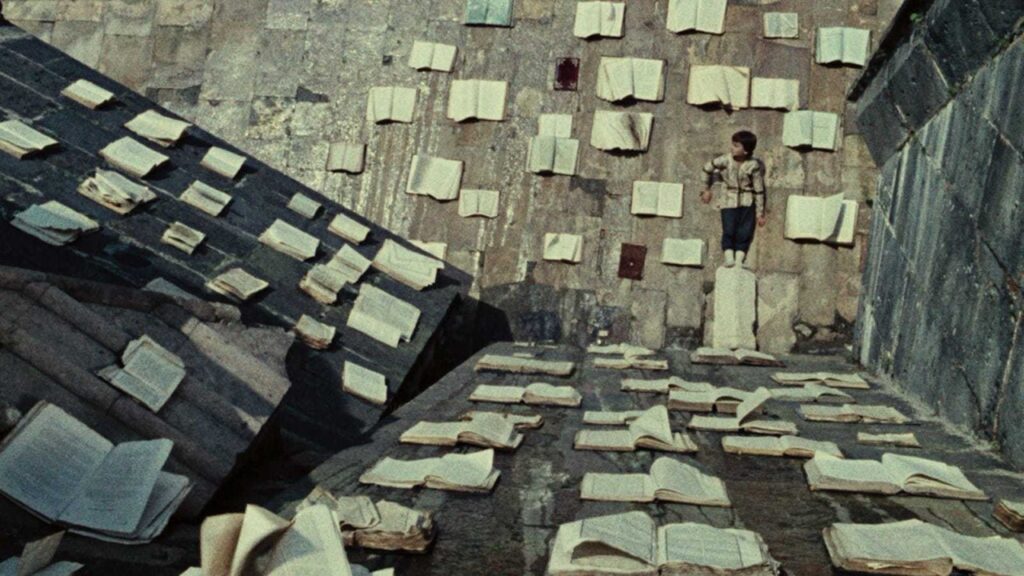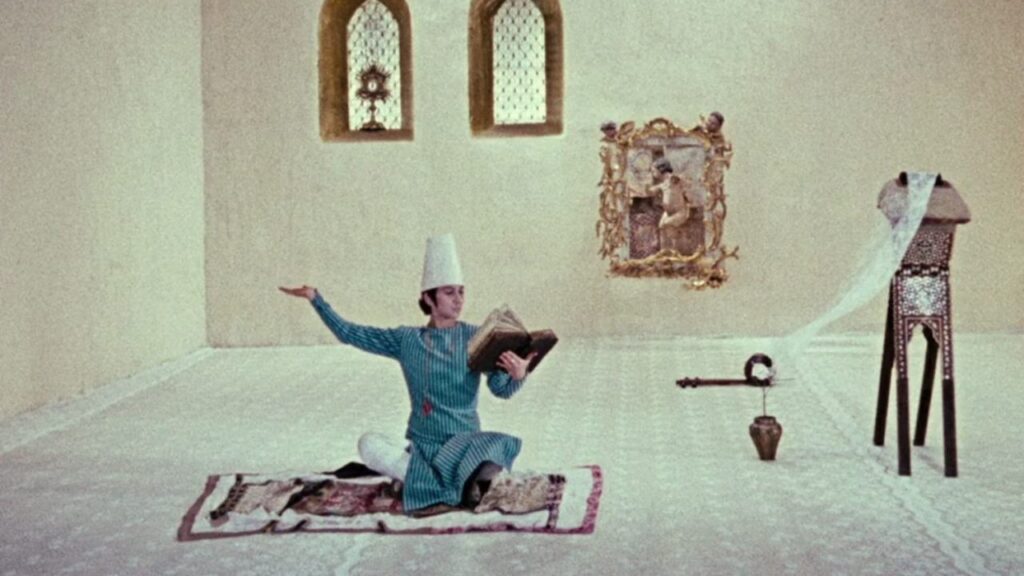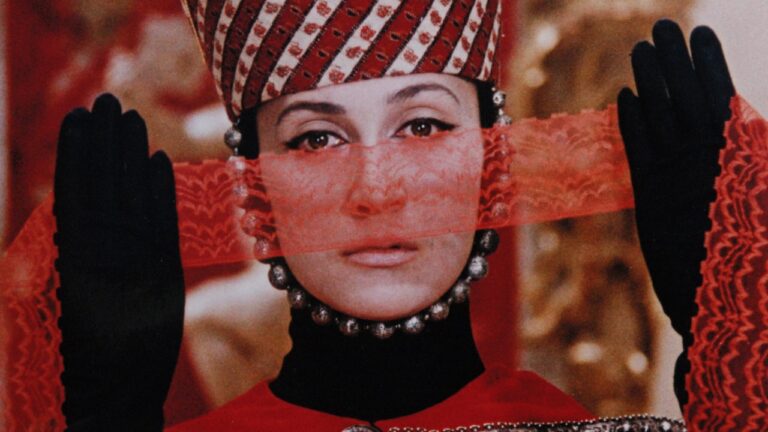Some films can be described in a single line, but Sergei Parajanov’s The Color of Pomegranates resists that temptation entirely. To call it a biography of the 18th-century Armenian troubadour Sayat-Nova is both accurate and misleading; after all, the poet’s life provides the entire framework. But Parajanov dismantles the entire conventions of storytelling, offering us instead a succession of images that feel much closer to illuminated manuscripts or sacred icons than to narrative cinema.
The film exemplifies Parajanov’s approach and tells us, ‘not something to be watched’ in passing, but a work to be contemplated with patience and reverence. Parajanov arranges Sayat-Nova’s life into eight movements, showing us the childhood, youth, poet, court, love, monastic retreat, decline, and death. Each is staged as a ritual, where gestures, objects, and colors carry the meaning that dialogue or action usually would.
From Childhood to Eternity: Sayat-Nova’s Life Rendered in Symbolic Imagery

The opening frames set the tone of wool stretched out to dry, pomegranates split and bleeding, and manuscripts immersed in water. The young Sayat-Nova is surrounded not by toys or playmates but by the materials that will define his life. The creator gives us a glimpse of textiles, books, and ritual. In Parajanov’s vision, the poet’s childhood is not innocence preserved, but a solemn initiation into the symbolic and cultural fabric of Armenia.
And as the young Sayat grows, his desire enters as well, but in coded ways. We see a woman peer from behind a veil, with ripe fruit bursting open, and fabrics unfold in vivid layers. The poet is portrayed by Sofiko Chiaureli in an androgynous form, emphasizing that creation itself transcends gender. Parajanov suggests that poetry, like desire, resists boundaries. After his youth, Sayat-Nova finds his place at the Georgian royal court, and Parajanov depicts it as both Breathtaking and rigid, as the courtiers are arranged like chess pieces, the monarchs are cloaked in superior fabrics, and the gestures are frozen in ceremonial repetition. The beauty of creativity thrives here, but somehow it is only possible under the gaze of power.
Sayat’s romance, which is possibly with Princess Anna, is staged in various representations of symbols. We see a beautiful peacock strutting its way, while grapes and pomegranates split, and the veils are concealed and revealed. No words are exchanged, yet the presentation of longing permeates every gesture, showing us that their love is destined to remain unfulfilled and remembered more as an image than an event. Disillusioned by the idea of romance and heartbreak, Sayat-Nova retreats into the monastery, and eventually the palette darkens, as we see monks in black robes, animals being led to sacrifice, and rituals repeated with solemn precision. This is a renunciation not only of love but of worldly life itself, because it was a turning toward the eternal.
In the final movement, the poet ages and fades away. His garments are folded, while his body shrouded, and once again the pomegranate bleeds. The imagery circles back to the beginning, closing life’s cycle. Death is depicted not as an end but as a passage.
Sergei Parajanov’s Symbolic Cinema Uses Objects as Storytellers and Vessels of Cultural Memory

Perhaps the most striking aspect of Parajanov’s method is the way he allows objects to serve as characters. The framing and representation of wool, manuscripts, cloth, fruit, musical instruments, and livestock all act as silent storytellers. For Armenians watching under Soviet censorship, these images carried profound weight, as they encoded memory, faith, and national identity in ways that could not always be spoken aloud.
The pomegranate, which was central to the film’s imagery, embodies Armenia itself, depicting fertile, wounded, and enduring. Each time the fruit bursts open, it recalls both sacrifice and survival. In the late 1960s, Soviet cinema was still under the regime of Socialist Realism, with its demand for clarity, heroism, and didactic messages. At a time when bold, outspoken films were expected to make an impact, Parajanov went in the opposite direction, creating a work without dialogue-driven plotlines, socialist heroes, or compromise. It’s no surprise that authorities intervened, re-editing and censoring much of it. Yet even in its altered form, the film retained enough power to leave audiences amazed.
Filmmakers such as Andrei Tarkovsky admired Parajanov’s vision, while Martin Scorsese later championed its restoration. Today, The Color of Pomegranates is no longer seen as an eccentric oddity but as a landmark film, proving that cinema can function as poetry, as painting, and even as ritual.




